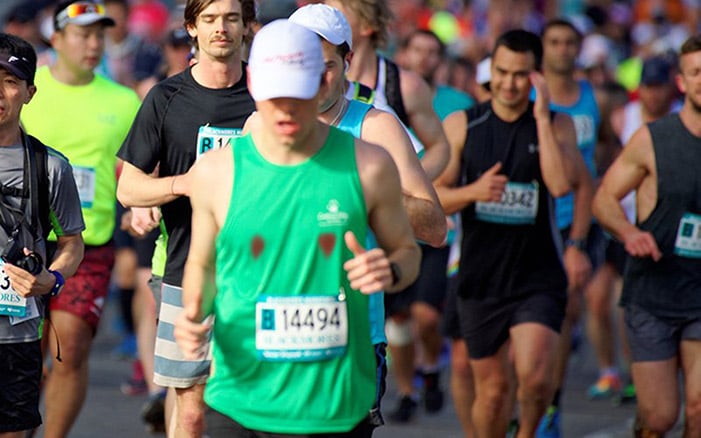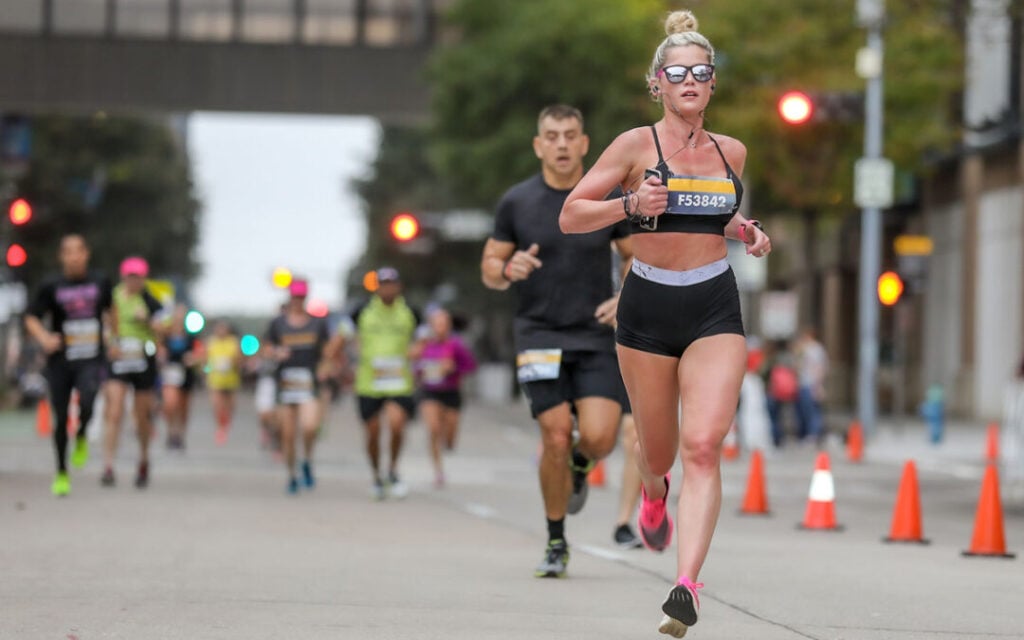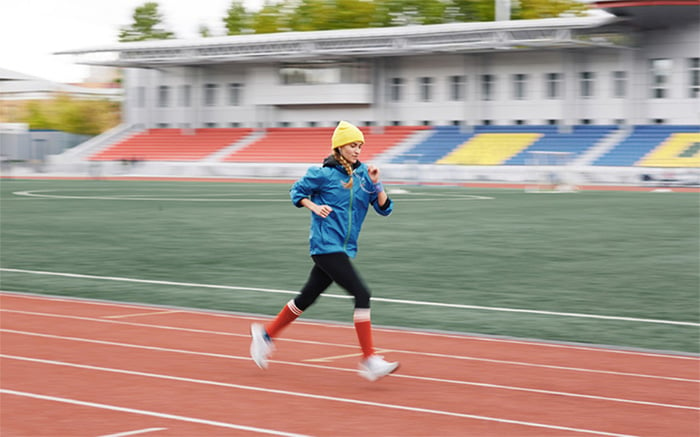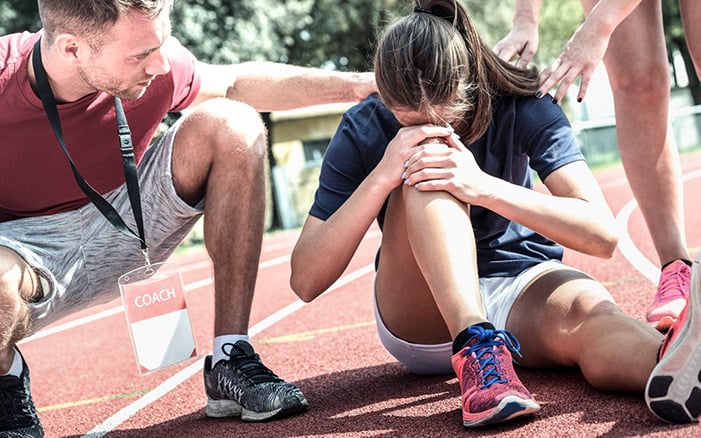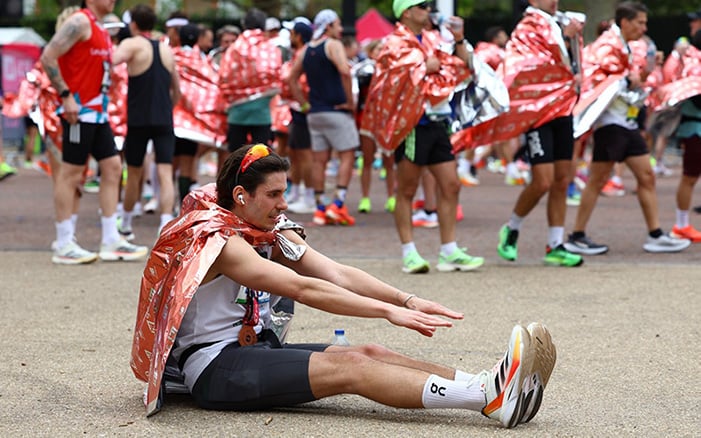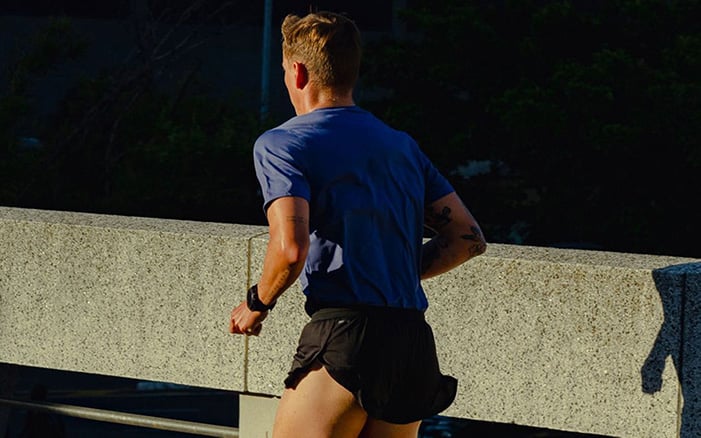Running in hot weather without smart preparation can quickly become dangerous. Heat dramatically impacts your performance and overall health, increasing the risks of dehydration, heat exhaustion, or even heat stroke.
Here are 10 things you should avoid when running in hot weather—and how to handle them properly.
1. Wearing dark or heavy clothing
Dark colors and heavy fabrics like cotton trap heat, turning your run into a sauna session. And contrary to some beliefs, overdressing just to “sweat more” doesn’t enhance fat burning—it just overheats your body faster.
Do this instead:
- Opt for lightweight, moisture-wicking fabrics and lighter colors to reflect the sun.
- Cover your head with a breathable, UV-protective hat to reduce heat absorption and lower the risk of sunstroke.
- Avoid cotton as it holds onto sweat, preventing evaporation and impairing your body’s natural cooling—this leads to overheating and chafing.

2. Neglecting sunscreen
Skipping sunscreen doesn’t just risk sunburn; prolonged UV exposure can lead to premature skin aging, skin cancer, and a decline in performance due to overheating.
Do this instead: Apply a sweat-resistant, broad-spectrum sunscreen (SPF 30 or higher) 20 minutes before heading out, and reapply every hour if running long.
Related: How to Take Care of Your Skin Before and After Running
3. Skipping hydration before your run
Starting a run dehydrated sets you up for early fatigue, muscle cramps, reduced endurance, slower recovery, and overall poorer performance.
A study found that losing as little as 2% of body weight in fluids can reduce time to exhaustion by 20% and impair cognitive function.
Do this instead: Drink 16–20 ounces of water or a sports drink at least one hour before running, then sip 5–8 ounces every 15–20 minutes during your warm-up and early miles.
4. Skipping your warm-up
You might think warm-ups aren’t necessary in the heat, but stiff muscles still risk injury, even on hot days.
Do this instead: Spend 5–10 minutes on dynamic stretches like leg swings, walking lunges, or easy jogging before increasing your pace.
Related: 6 Warm-up Mistakes to Avoid Before Any Race
5. Running during peak heat hours
Running in the midday heat (between 11 a.m. and 4 p.m.) dramatically increases your risk of overheating and dehydration.
Do this instead: Schedule your runs in the cooler early morning or late evening hours, or choose shaded trails.
6. Sticking to your usual training plan and pace
Trying to maintain your typical pace and training volume in hot conditions can push your body beyond safe limits, leading to exhaustion or worse.
Do this instead:
- Slow your pace by 30–60 seconds per mile.
- Prioritize effort rather than speed or distance. Use the talk test—if you can’t comfortably talk, slow down.
7. Choosing your usual route
Your familiar route might lack shade or easy access to water, making it risky on hot days.
Do this instead: Plan runs on shaded, tree-lined paths, or loops near public water fountains or your home.
8. Drinking only water on long runs
Plain water alone on long, hot runs can dilute sodium levels, putting you at risk for hyponatremia, a dangerous condition characterized by abnormally low sodium concentration in the blood. Symptoms include confusion, nausea, headaches, swelling, seizures, and in severe cases, it can even be fatal.
Do this instead:
- Drink sports drinks or electrolyte-infused water during runs lasting over an hour. Aim for about 5–8 ounces every 15–20 minutes.
- Look for products containing sodium (at least 100–200mg per 8 ounces) and some carbohydrates (4–8%) to fuel your muscles and improve absorption.
9. Ignoring your sweat rate
Sweat loss varies significantly between individuals, and not knowing yours can lead to improper rehydration.
Do this instead:
- Determine your sweat rate by weighing yourself naked before and after a one-hour run. Each pound lost equals approximately 16 ounces of fluid.
- Aim to replace about 125–150% of the fluids lost within the first hour post-run, ideally with electrolyte-rich beverages as we said before.
Regularly monitoring your sweat rate as weather conditions change can help you adjust your hydration strategy effectively.
10. Ignoring warning signs from your body
Pushing through dizziness, nausea, chills, or cramps is dangerous. These are signs of heat exhaustion or impending heat stroke.
Do this instead: At the first signs of trouble, immediately stop running, find shade, hydrate, and cool your body: apply ice packs, cold water, or damp towels.
Quick safety tips recap:
- Wear light clothing and sunscreen.
- Hydrate early and include electrolytes.
- Avoid peak heat hours.
- Adjust your training plan, pace, and route.
- Listen to your body carefully.
